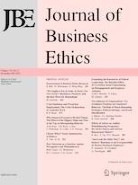|
Autors/es
Matute, Jorge ; Sánchez-Torelló, José Luis ; Sánchez-Torelló, José Luis ; Palau-Saumell, Ramon ; Palau-Saumell, Ramon
|
Abstract
Background: Antimicrobial photodynamic therapy (aPDT) is a growing approach to treat skin and mucosal infections. Despite its effectiveness, investigators have explored whether aPDT can be further combined with antibiotics and antifungal drugs. Objective: To systematically assess the in vivo studies on the effectiveness of combinations of aPTD plus antimicrobials in the treatment of cutaneous and mucosal infections. Materials and methods: Searches were performed in four databases (PubMed, EMBASE, Cochrane library databases, ClinicaTrials.gov) until July 2018. The pooled information was evaluated according to the PRISMA guidelines. Results: 11 full-text articles were finally evaluated and included. The best aPDT combinations involved 5-aminolevulinic acid or phenothiazinium dye-based aPDT. In general, the combination shows benefits such as reducing treatment times, lowering drug dosages, decreasing drug toxicity, improving patient compliance and diminishing the risk of developing resistance. The mechanism of action may be that first aPDT damages the microbial cell wall or membrane, which allows better penetration of the antimicrobial drug. Limitations: The number of studies was low, the protocols used were heterogeneous, and there was a lack of clinical trials. Conclusions: The additive or synergistic effect of aPDT combined with antimicrobials could be promising to manage skin and mucosal infections, helping to overcome the microbial drug resistance.
|

WoS
Scopus
Altmetrics
 
|
|
Publicació
Journal of Business Ethics, November 2021, v.174, n.2, p.369-386
|
